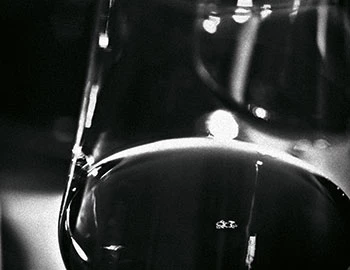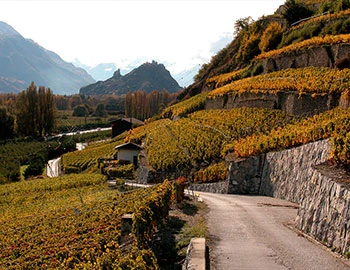
Antica Cornalin 2022
AOC Valais, Domaine Cornulus, 750 ml

| Grape variety: | Cornalin |
| Producer: | Domaine Cornulus |
| Origin: | Switzerland / Wallis |
Description
At Domaine Cornulus, the Antica line stands for top quality, expression of the terroir, complex structure and durability. This Cabrnalin from old vines comes from three biodynamically cultivated plots.The Cornalin Antica is characterised by its blackberry bouquet with notes of blueberries, blackberries and sour cherries. On the palate, it shows generous, velvety depth with noble tannins that make it an excellent food companion and storage wine.
Attributes
| Origin: | Switzerland / Wallis |
| Grape variety: | Cornalin |
| Ripening potential: | 2 to 7 years after harvest |
| Drinking temperature: | 16 to 18 °C |
| Food Pairing: | Rabbit ragout with olives, Roast saddle of venison, Wild specialities |
| Volume: | 14.5 % |
| Note: | Contains sulphites |
Domaine Cornulus
What started out from humble beginnings over 20 years ago is now one of Valais’ flagship wineries and the byword for both a way of working in harmony with nature and premium wines, all of which strongly bring out their individual terroir.
Valais natives and cousins Stéphane Reynard and Dany Varone are perfectionists who love what they do. They tend to their vines, which live and thrive above Sion in the village of Savièse, as if they were their own children. Thanks to Dany Varone’s meticulous and expert work in the wine cellar, they craft terroir wines of the highest quality. This winemaking duo – now part of the Valais elite – laid the foundation for their successful Domaine Cornulus project in 1986, setting up the “Buteo” wine cellar and launching their “Garage Winery”. They bought their first harvests straight off the vines of various Savièse winegrowers and started pressing them in a garage. The following year, they leased their first vines in the vineyards above Sion (less than 1 hectare). In 1989 they created the Sélection Cornulus, after which their winery is named. A few harvests later, they acquired their first plots in the Clos de Mangold in 1995. Their dream of establishing a real domaine of their own gradually took shape. “After all, you will rarely find a good wine without terroir,” say Stéphane and Dany. In 1999 there followed the “prime cut”, the famous Clos des Corbassières, the jewel in the domaine’s crown. In the course of the “noughties”, they successively acquired various Grand Cru plots between Sion and Sierre as well as Clos Chamaray, St-Charles and La Follie. The rich palette of exquisite vines was finally rounded off to perfection by the magnificent Clos des Monzuettes.

Cornalin
A mouthful of wine
The Cornalin is the victim of confusion. It is one of the oldest specialities of Valais. Traditionally, it was known there under the name Rouge du Pays, or “country red”. But, as there was already a variety bearing that name in the Aosta Valley, it was officially rechristened Cornalin. It was thought that this referred to the same grapes. Yet genetic analysis showed that the two, while related, are not identical. There are thus two completely different grapes with the name Cornalin. The Valais Cornalin – or the Rouge du Pays – is a merry, everyday wine. It tastes of black cherry, raspberry and violets and fills the palate with plenty of velvety tannins. A slightly spicy note, as of cinnamon or cloves, is typical. It tastes great with mature Valais cheese and ham from a mountain pig!

Wallis
Valais: Alpine wines with class
More than 20 varieties of grapes can yield wines in Valais that are full of character. A large number of them grow on spectacular, steep slopes. Sealed off by mighty chains of mountains, old plantings like Petite Arvine, Amigne and Cornalin have survived in Valais, and today they are highly sought-after by wine enthusiasts. The highest vineyards in Europe are also found in Valais: the Savignin vines (known here as “Heida”), rooted in the mountain community of Visperterminen.

Switzerland
Switzerland – A small country with enormous diversity
Switzerland is famous for its banks, watches, and cheese, but not necessarily for its wine. The Swiss didn't invent wine, but they have been extremely open and curious to it. Wine culture arrived in what is now modern Switzerland via several routes: from Marseilles to Lake Geneva and the Lower Valais region; from the Aosta Valley through the Great St. Bernard Pass to the rest of Valais; from the Rhone through Burgundy, across the Jura Mountains to Lake Constance; and from Lombardy to Ticino, and then on to Grisons.


